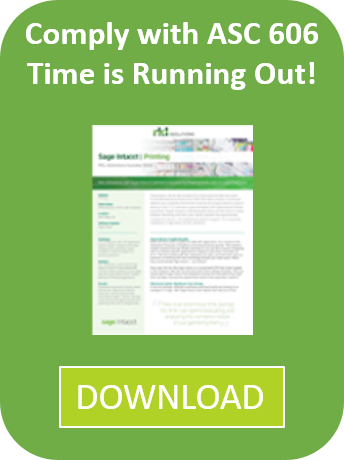Sometimes, people will ask for the CliffsNotes on a tough subject that they are studying, whether it is organic chemistry for an undergraduate degree or the LSAT for admission to law school. CliffsNotes are usually succinct summaries, which provide the most essential information about something that is really complex.
 What would the CliffsNotes for the upcoming revenue recognition shift look like? The Financial Accounting Standards Board and the International Accounting Standard Board have produced revised rules that both private and public organizations must start following before the end of the decade. Let's map out what you need to know to survive this complex transition:
What would the CliffsNotes for the upcoming revenue recognition shift look like? The Financial Accounting Standards Board and the International Accounting Standard Board have produced revised rules that both private and public organizations must start following before the end of the decade. Let's map out what you need to know to survive this complex transition:
1) The same old financial coping mechanisms won't be enough anymore
Chances are, you rely to some extent on Excel sheets to handle your billing, accounting, and forecasting. Even before the impending revenue recognition shift, these spreadsheets have been questionable tools for handling critical financial operations.
A 2013 survey from Ventana Research found that 35 percent of respondents were aware of errors in their Excel sheets. Plus, more than half (54 percent) said they took at least a week to perform their monthly closes.
Updates to ASC 606 and IFRS 15 create new complexities that will further strain such spreadsheet-based processes. There will be more frequent reallocations for contract changes, no more revenue recognition on cash receipt and regular deferrals of expenses.
"Intacct can recognize both sets of rev rec rules simultaneously."
2) Dual reporting will be essential through the 2017 and 2018 deadlines
Public companies have until December 2017, and private ones until December 2018, to make the final move to the updated standards. The transition will need to be gradual, with dual reporting for the contracts that begin under the old rules but run through the deadlines.
Cloud financial software like Intacct is uniquely capable of meeting this requirement. It can recognize both sets of rules simultaneously, so you can thoroughly prepare for the eventual rev rec switchover.
This is particularly important for companies that rely on subscriptions for revenue, such as SaaS vendors. A solution such as Intacct can provide the side-by-side reporting they need when transitioning from the previous accounting guidance to the new versions of ASC 606 and IFRS 15.

The deadline for the rev rec guideline changes will be here sooner than you think.
3) Automation is the only way to handle the complexity of the new rules
Working by hand in Excel or other legacy financial software is slow, risky and non-scalable. In contrast, the automation that is built into Intacct enables a seamless workflow for capturing new contracts, migrating old ones and consolidating multiple global entities.
The benefits of Intacct are even more dramatic if paired with the expertise and experience of an Intacct Premier Partner such as RKL. From initial planning to ongoing training and education, RKL is with you every step of the way, ensuring that your Intacct implementation is exactly right for your organization's particular requirements, challenges and goals.




